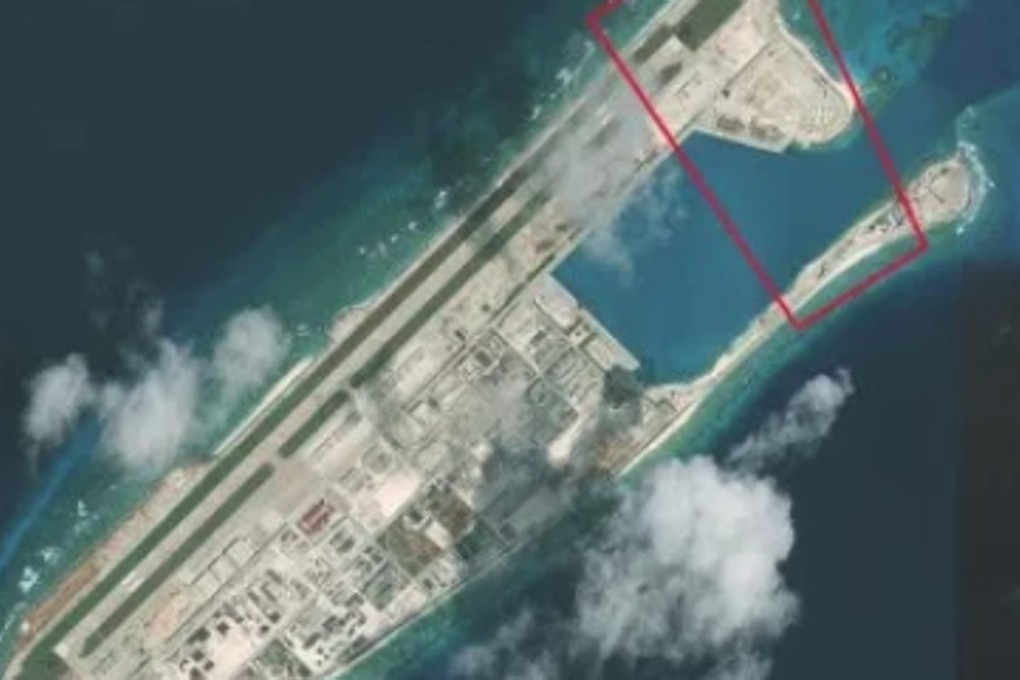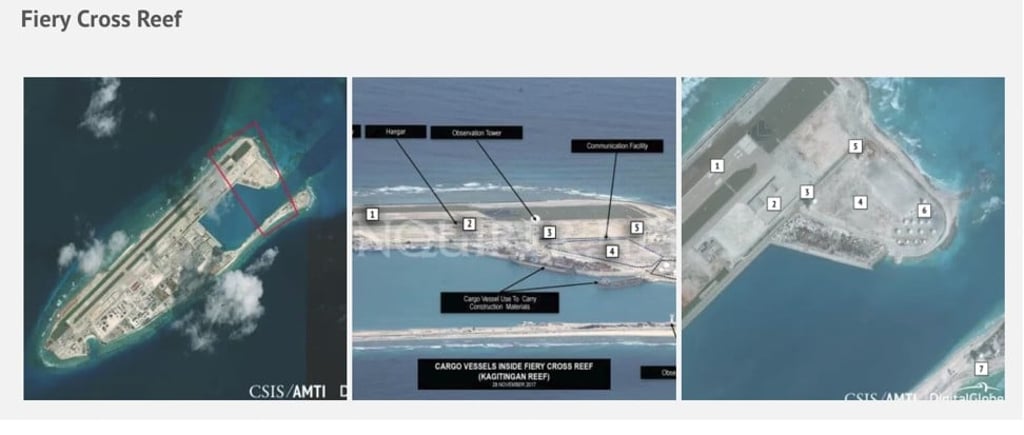Aerial photos ‘point to new Chinese signals hub’ in the heart of the South China Sea
Washington-based think tank says flurry of activity on Fiery Cross Reef suggests the artificial island is becoming a communications centre for Beijing to put its stamp on the area

China could be turning an artificial island in contested South China Sea waters into an intelligence hub as it seeks to exert control over the region, according to a Washington-based think tank.
The CSIS Asia Maritime Transparency Initiative said the northeastern corner of Fiery Cross Reef was now equipped with a communications or sensor array bigger than those found on other artificial islands in the Spratlys.
It based the finding on a comparison of its own satellite images and aerial photos released by the Philippine Daily Inquirer earlier this month.
“[It suggests that] Fiery Cross might be serving as a signals intelligence or communications hub for Chinese forces in the area,” the think tank said in a report on Friday.
Also known as Yongshu Reef in China, Fiery Cross Reef is one of the seven reefs Beijing turned into islands in the Spratlys. It is the smallest and the southermost of the “Big Three”, which also includes Subi, or Zhubi in Chinese, and Mischief, or Meiji.
